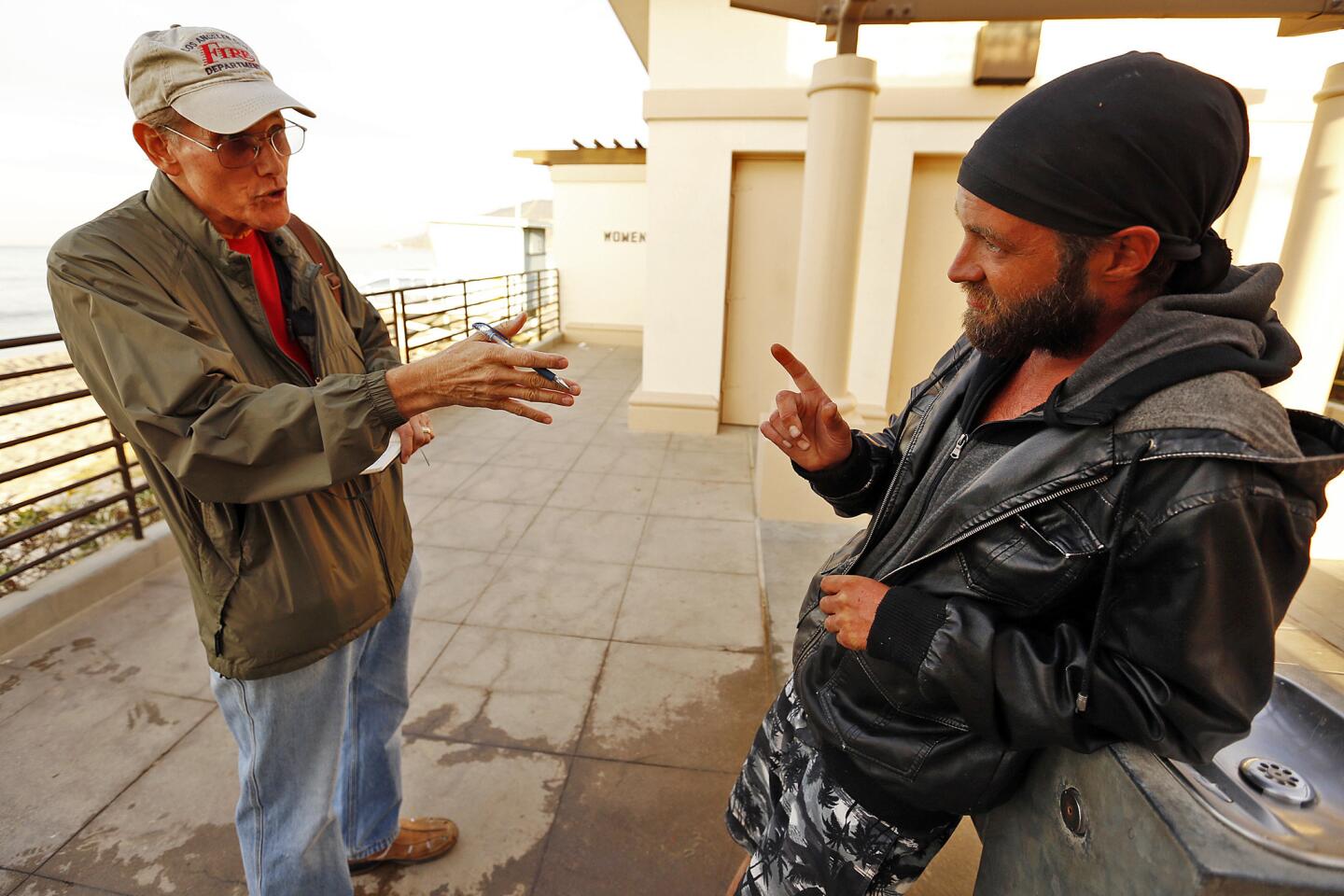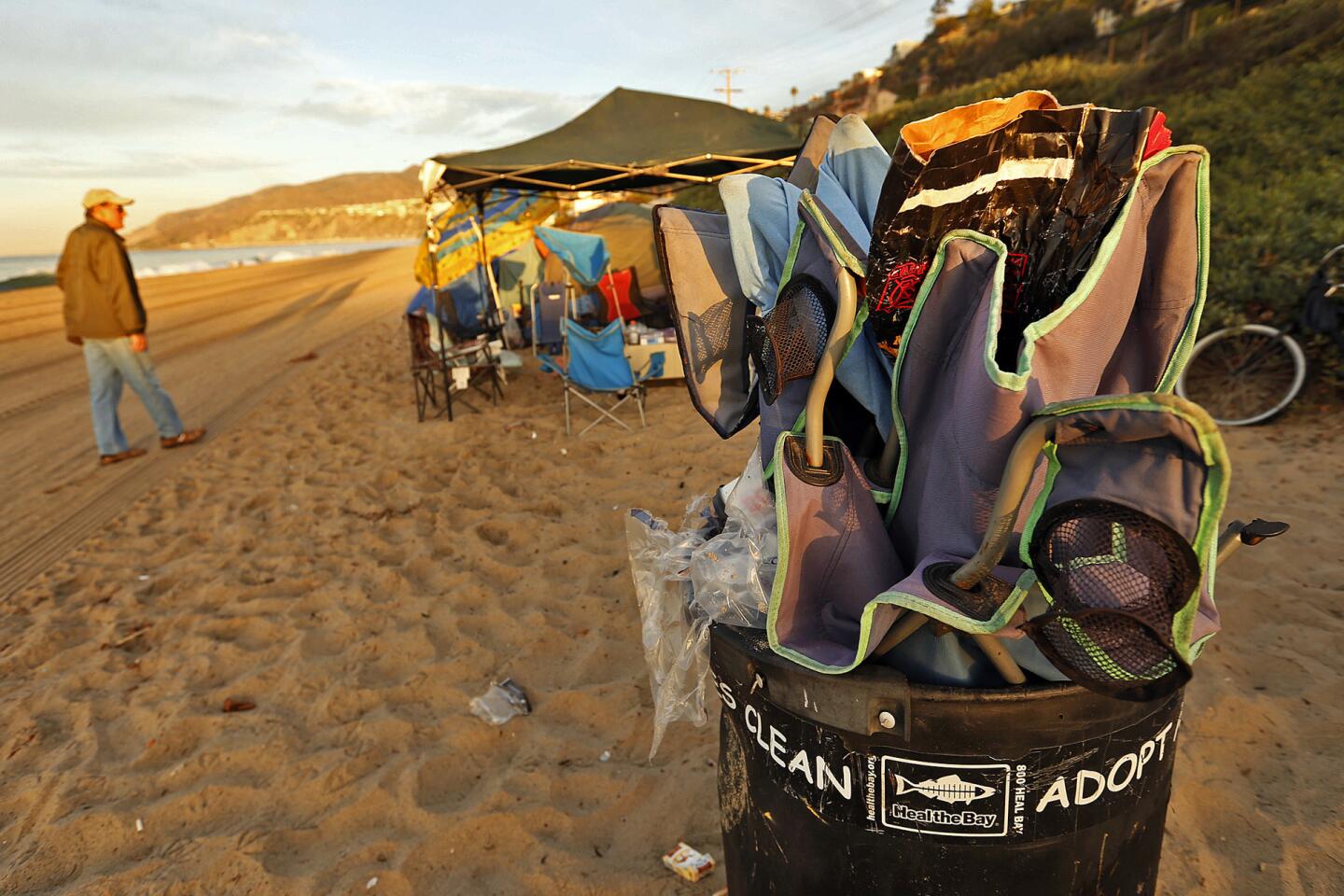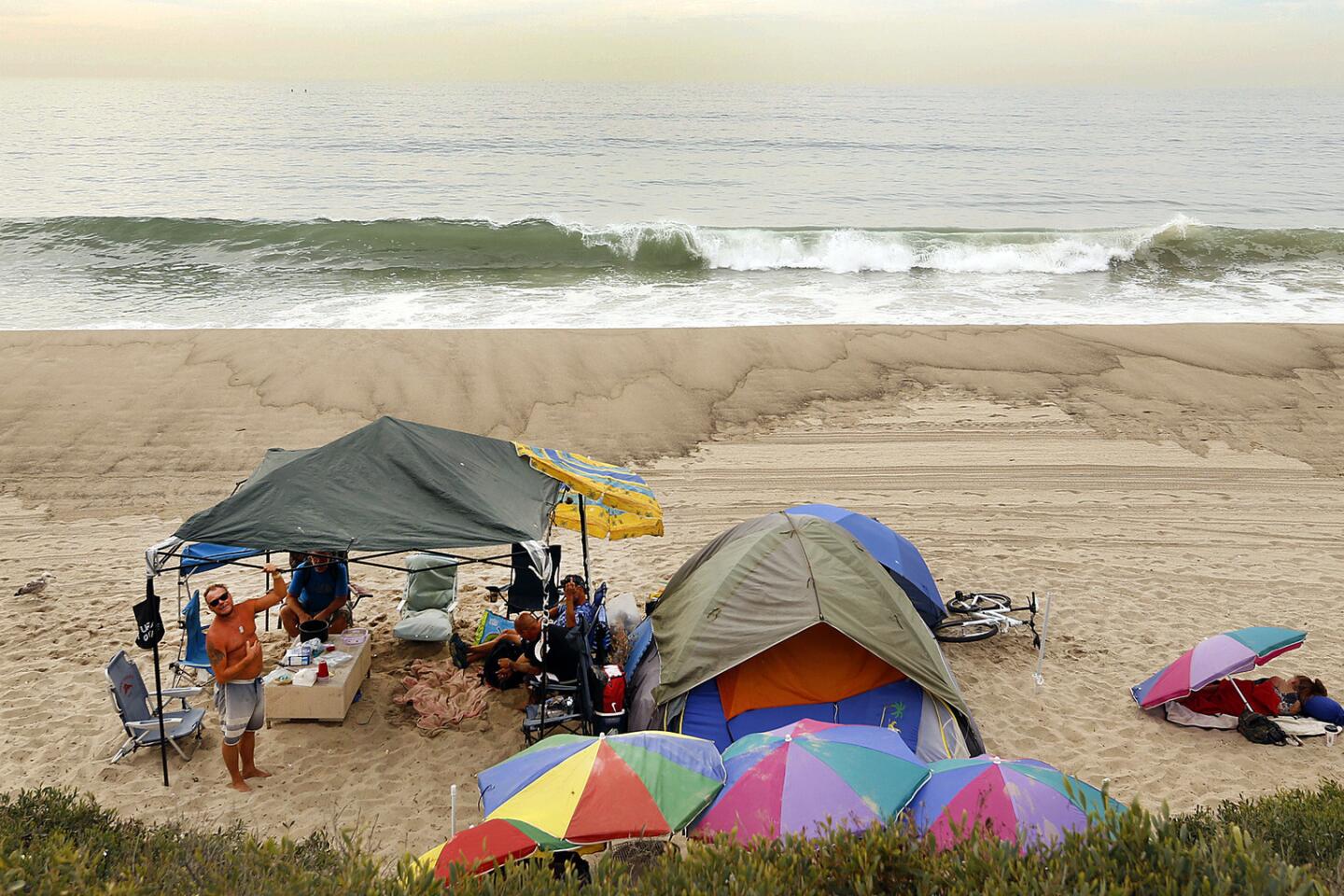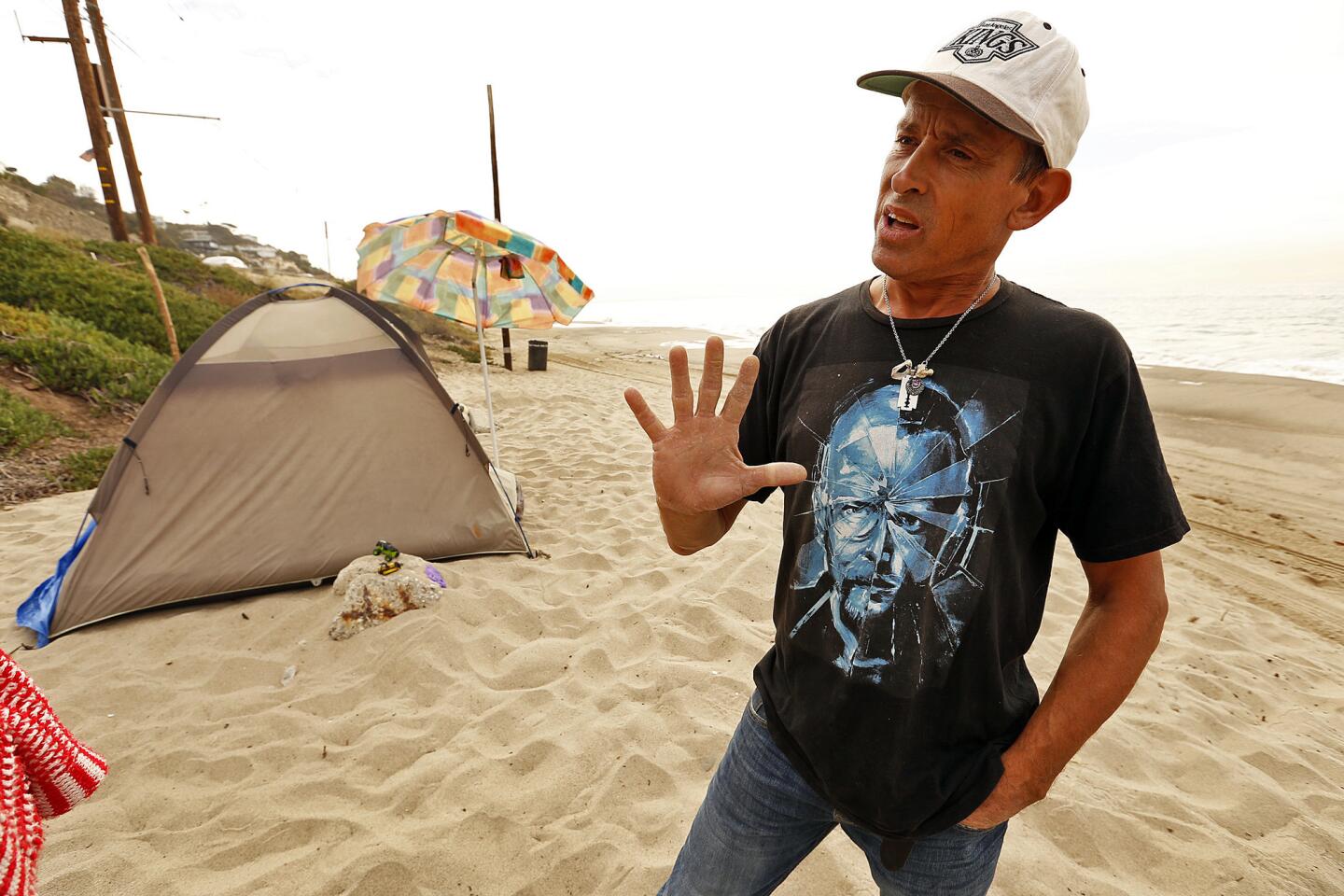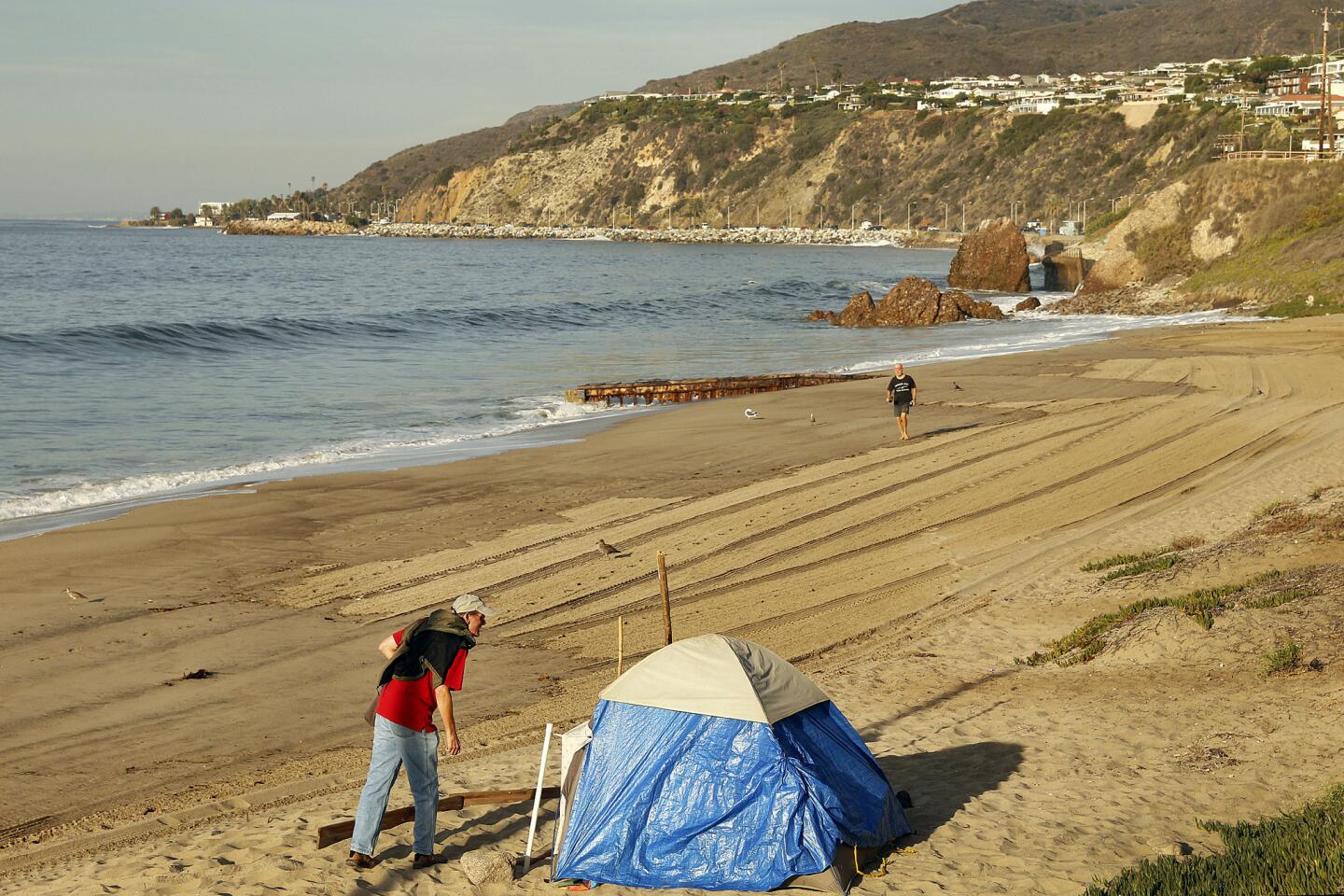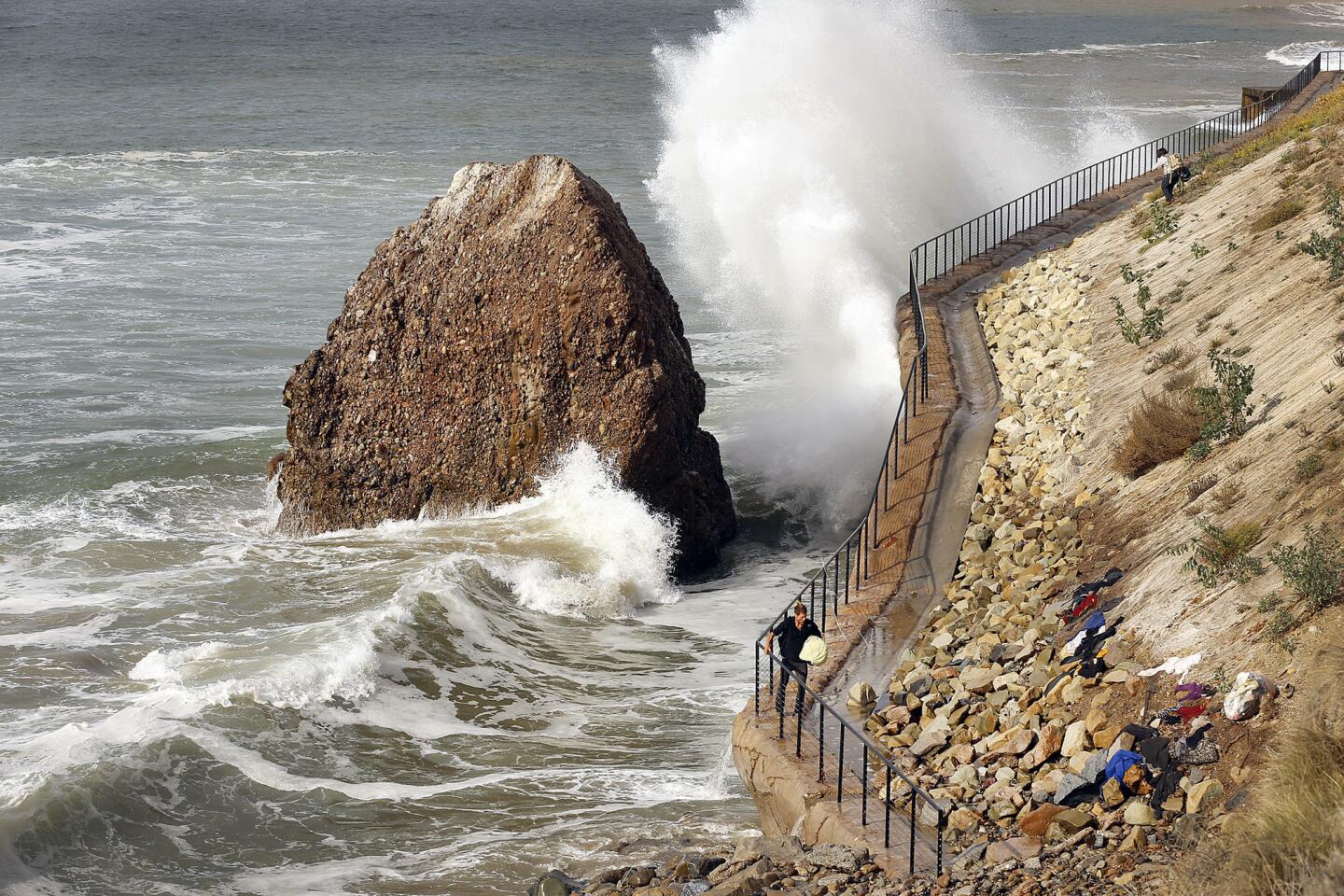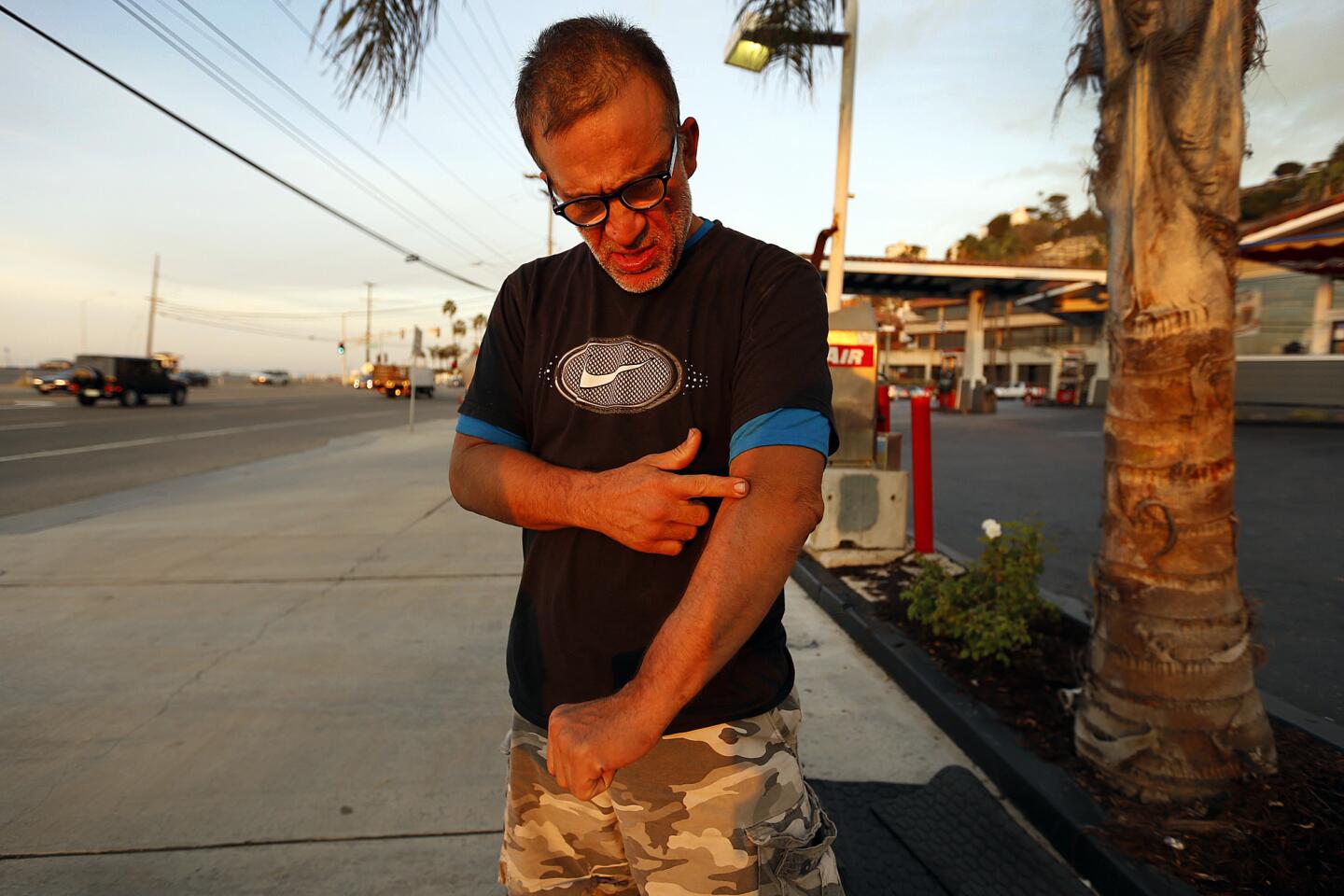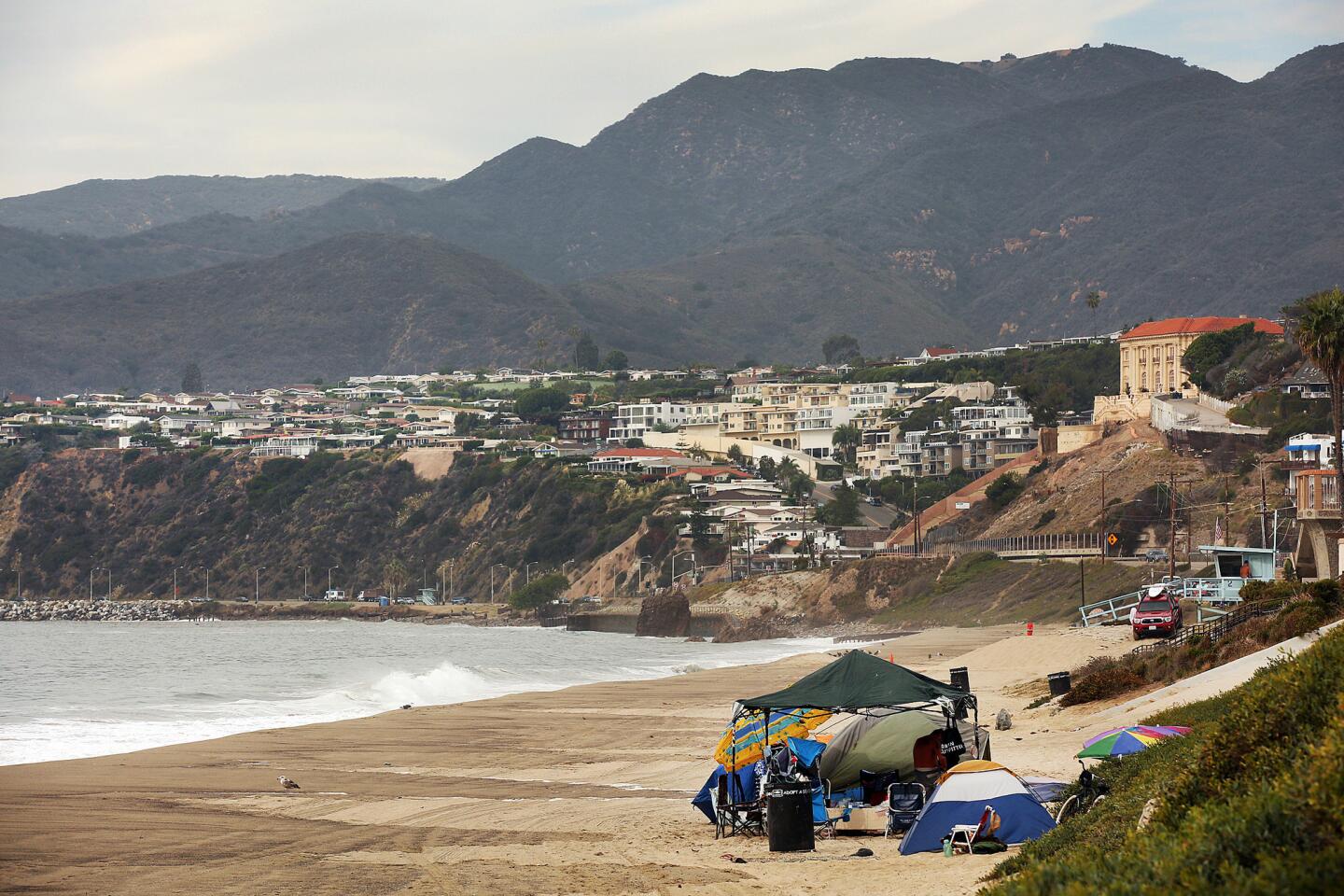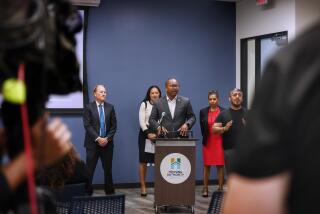In upscale Pacific Palisades, reaching out to a rising homeless population
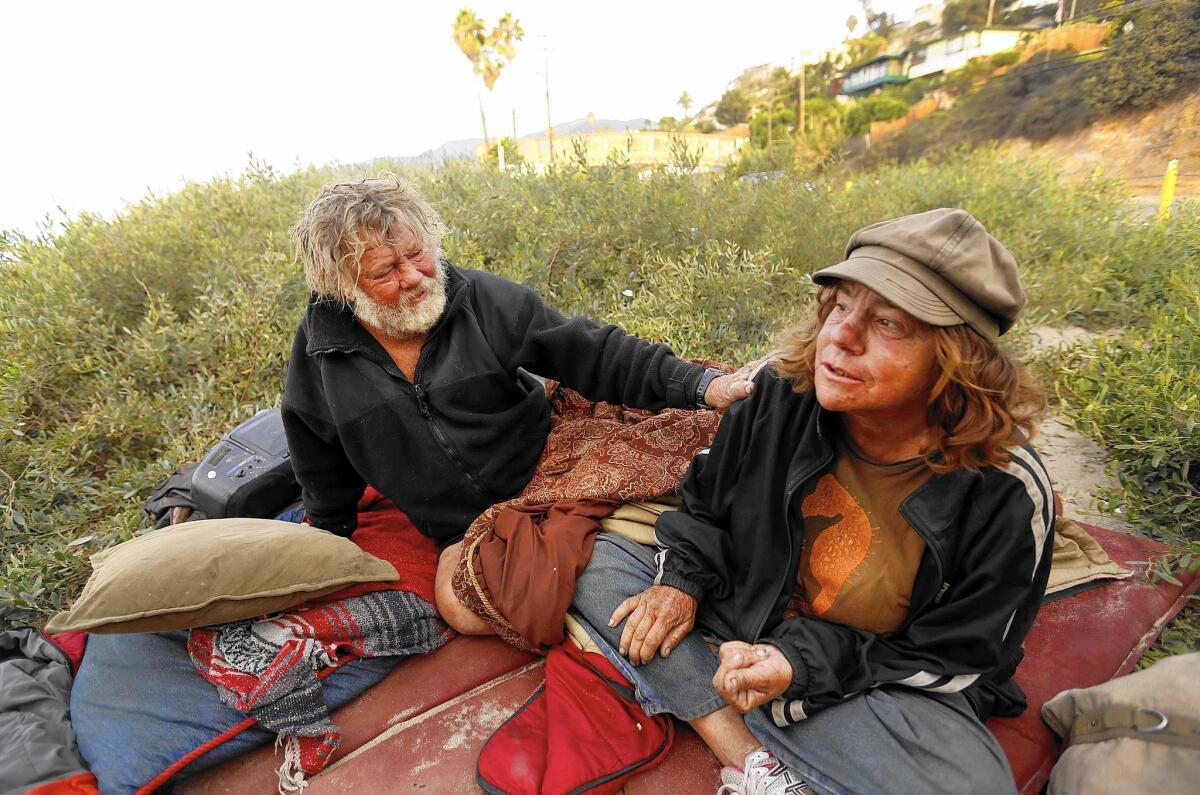
- Share via
Leaping around his rocky beach encampment across from the Getty Villa in Pacific Palisades, Sam has it better than many homeless people: sapphire skies, a beach cruiser bicycle and bags of castoffs from his affluent neighbors to give away to friends.
“I’m not homeless, I live outside and I’ve got a [big] yard,” said Sam, who wouldn’t give a last name.
“Uggs! $150!” he called out to visitors, holding up a child-size pair of the sheepskin-lined boots.
The rising homelessness that brought Sam to this serene seaside community has also brought random reports of previously unheard-of crimes — including a machete attack — and encampments to the vanilla sands of Will Rogers State Beach.
While business districts in downtown Los Angeles often meet such problems by paying for private cleanup and security, Pacific Palisades residents are taking a different approach. Earlier this year, they launched a private $500,000 fundraising campaign to bring mental health and other services, along with interim and permanent housing, to the community’s estimated 180 homeless residents.
Resident funding of direct homeless services is rare, experts said. But Palisades residents say it makes sense as an alternative to the current system, which often bounces homeless people from jail to hospitals to the streets.
In a community where it’s not unusual to see a driver lean out of his Range Rover to flip a homeless person a $20 bill, paying for professional help made sense.
Maryam Zar, who chairs the Pacific Palisades Task Force on Homelessness, said that after months of study, the group decided that “if we didn’t bring in a full-service provider, the law and the LAPD could do nothing to change the equation.”
“I personally think we can’t wait to get government support,” Zar said. “Our residents should be able to step up to the task and fund our own solution.”
The citizens group has contracted with the Ocean Park Community Center, a Santa Monica service agency, for outreach workers to steer homeless people into mental health, acute care and substance abuse treatment — and eventually housing. With $100,000 already in the bank from residents and local groups, including the American Legion and the Corpus Christi Catholic Church, the plan is to have two full-time workers in the field in January.
“It’s commendable,” said Sam Tsemberis, a New York-based homeless services and housing pioneer who is consulting with Los Angeles veterans officials. “Even more amazing, it is citizens actually raising the funds to move people from Pacific Palisades to someplace with services for homeless people.”
But the homeless of Pacific Palisades are unlikely to receive housing there, given the neighborhood’s soaring real estate values. That could fuel charges of NIMBYism, which surfaced in 2010 when the community council fought against a proposed sober living home.
“It would be great if the community thought about the creation of affordable housing in their community,” said Nan Roman, executive director of the National Alliance to End Homelessness in Washington, D.C.
Privatizing homeless services also raises an equity question: Many Southern California neighborhoods with larger homeless populations can’t raise money as easily.
“In my district, churches and community groups have their own homeless operations, food kitchens and such, but they don’t have fundraising ability to the tune of a half-million dollars,” said Los Angeles Councilman Marqueece Harris-Dawson, co-chair of the city’s homelessness and poverty committee. “That’s the class privilege. If you have the money, you can do just about everything you want.”
Not every Palisades resident is sold on the services approach. Many continue to push for police action, or argue that their taxes should cover homeless services.
It can take years to win homeless people’s trust and talk them indoors. And their attachment to the beach could make it harder.
Despite the lack of shelters or other traditional services, homeless people survive in Pacific Palisades by recycling cans and bottles or relying on the kindness of strangers.
“The people of Pacific Palisades are very generous,” said Annie Caraway, a seven-year homeless resident who serves as a den mother of sorts for other transients. “They give us stuff all the time.”
Ocean Park executive director John Maceri said his organization houses 400 homeless people a year in mid-Wilshire, the San Fernando Valley and other neighborhoods, but generally not in the beach cities.
“I’ve had the conversation all the time, ‘I want an oceanfront apartment,’” he said. “I say I’ll be happy to help you when you can afford beach property.”
Some task force members already play an active role in ensuring the well-being of their homeless neighbors, whose stories reflect the wide range of problems that force them into the streets.
Patrick Hart, 67, said he patrols the beach to check on homeless people as part of his 12-step recovery from alcoholism.
One day last week he awakened in the shrubbery Jesse Littlefield, a 57-year-old former Marine and ironworker from North Carolina, and Jill Kline, 56. After summer police sweeps at the beach, homeless people started hiding in bushes, where they are plagued by bugs and ground squirrels, Hart said.
When a siren sounded in the distance, Kline called out “McCormick,” just before one of the company’s ambulances screamed into view. She’s lived outside so long she can distinguish ambulances by their wails.
“Being homeless it’s hard to be normal, but you do the best you can,” she said.
Michael Day, 46, is enrolled in a local film school but said he couldn’t afford expensive equipment and a place to live on his financial aid checks. Earlier that day, police had asked him to take down his beach tent.
“The cops said, ‘Hey, guy, wrap it up, dude. People with all their windows up there have a clear view of your tent,’” Day recalled. He said he was debating moving on or hiding his gear in a bush.
“The good people of the Palisades have been kind enough to share their beach with me,” he said. “It’s cool.”
Hart came upon Caraway sitting at the bus stop where she has spent most of her days these last seven years. Caraway said she is moving into a place in Burbank next month.
She could recall only a couple of other homeless people who found housing — but at least half a dozen others died in the streets, she said.
“They drank themselves to death,” she said.
The full-time outreach workers will have the time to get to know each homeless person in the Palisades and wait for them to be ready to move indoors.
Eventually they accept housing after “somebody is physically assaulted or suffers physical deterioration,” Maceri said. “It takes a long time, but this is the essence of the work.”
“We can only take care of one person at a time,” Hart said.
Twitter: @geholland
ALSO:
Just out of college and earning $81,000? Must be a CSU Maritime grad
California doctor convicted of murder charges in overdose of patients
Pharmacist at center of Valeant scandal accuses drugmaker of ‘massive fraud’
More to Read
Sign up for Essential California
The most important California stories and recommendations in your inbox every morning.
You may occasionally receive promotional content from the Los Angeles Times.
